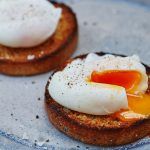What’s the difference between free sugars, naturally occurring sugars and total sugars?
Sugar is classed in two ways:
- FREE SUGARS –Free sugars includes added sugars in any form including honey, syrups and nectars and all juices, smoothies, pastes and extruded products from fruits and vegetables. It is these types of sugars that we need to be consuming less of
- NATURALLY OCCURRING SUGARS – sugar found naturally in fruits and vegetables (fresh, frozen or dried) or dairy products (milk, plain yoghurt and cheese)
“Total sugars” is the value given on food labels, that includes all sugars, regardless of the source. In other words, it includes those naturally present and those added to the food or drink.
How do I know how much sugar there is in my food and drink?
It’s really important to understand what you’re eating and drinking, where it’s come from and how it affects your body. You can educate yourself about the sugar content in your food and drink by checking the information on the labels.
Things to look out for:
- Added sugar or free sugars – the ones we want to cut down on – aren’t always labelled as sugar, so can be tricky to spot. Keep an eye out for the following in ingredients lists, which are all sugars: agave nectar, corn sweetener, dextrose, honey, corn syrup, sucrose, fructose, glucose and molasses.
- Food labels list ingredients in descending order, so in general, the higher sugar appears in the list, the more sugar that product contains.
- For extra clarity, use the nutritional information panel on the back of the pack. Sugar is listed as ‘of which sugars’ and is the total sugar content per serving and/or per 100g. But, this figure doesn’t distinguish between free and naturally occurring sugars, so also check the ingredients list to get a feel for what type of sugars are actually in the product.
- In the UK, many food and drink manufacturers now use traffic light labelling on the front of their packs as well, signposting key nutrient values – including sugar, saturated fat and salt – as green, amber or red (low, medium or high). As a general rule, most of the time you should aim to choose food and drinks that are mainly green and amber across all values, not just sugar.
Should I be following a sugar-free diet?
It is possible to manage your sugar intake through a healthy, balanced diet, and, like most things, sugar is OK in moderation. However, what’s clear from Jamie’s Sugar Rush documentary, is that most people in the UK are consuming too much free sugar, and can definitely afford to reduce that intake. Remember, it’s free sugars you want to keep to a minimum – the majority of your sugar intake should come from fresh fruit and vegetables, and from milk, as they also provide other nutrients to our bodies, such as vitamins, minerals and fibre.
Why are fruit juice sugars considered to be free sugars, when sugars from a whole piece of fruit aren’t?
Eating fruit whole does not count towards our free sugar intake, as the sugars that are found within the fruit cell structure haven’t been found to have any adverse effect on our health. Plus, whole fruit also has the benefit of providing our bodies with fibre, which, as a nation, we are not currently eating enough of. Eating fruit in its natural form will help you towards achieving the recommended intake of 30g of fibre a day.
Drinking a glass (150ml) of unsweetened fruit juice is still a great way to help clock up one of your 5-a-day, but it’s best to limit yourself to one glass per day and to drink it at meal times, as the sugars and acid in the juice are harmful to your teeth. Even better, dilute it with the same amount of water to make it go further.
Why are sugary foods considered to be empty calories?
Sugary foods, such as soft drinks, biscuits, cakes and sweets are usually considered to be empty calories, as we often choose them over food rich in nutrients such as protein, fibre and other micronutrients. Sugary foods usually do not contain any other nutritional benefit apart from the energy that comes from the sugar. There is nothing wrong with having the occasional sugary treat, but it’s best to focus the rest of your diet on nutrient-rich foods, such as fruit and vegetables, wholegrain bread, cereals, rice and pasta, lean meats, fish, pulses and dairy foods.
Find out more – visit Jamie’s Sugar Rush campaign and let us know your thoughts @JamieOliver.






















